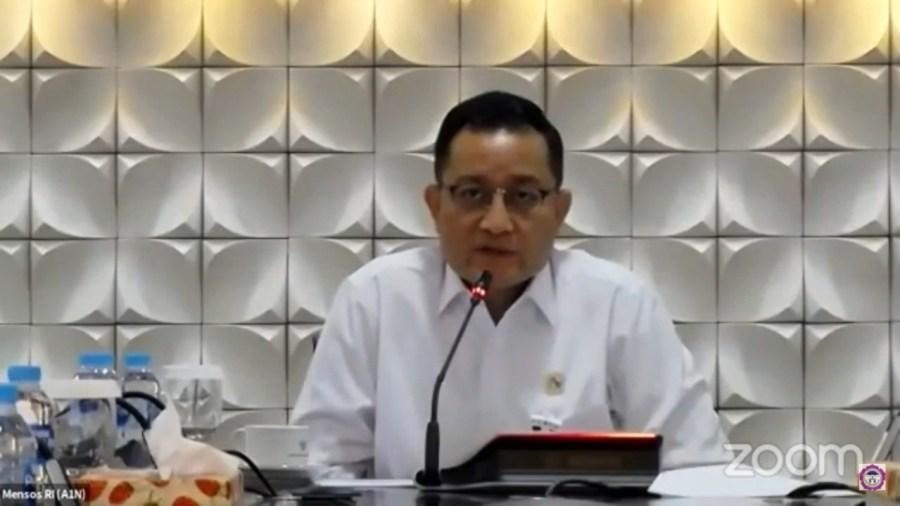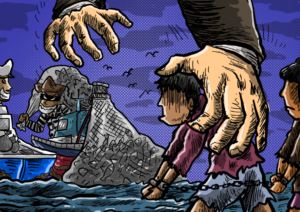It has been 10 years since Indonesia was dubbed as “baby smoker’s country”, following a viral footage of a two-year-old chain smoker in South Sumatra in 2010. In this ongoing tobacco epidemic, the number of child smokers has never decreased significantly. High percentage of smokers, including child and adolescent, is mostly caused by availability and affordability, low prices, and massive advertising.
Muhammad Fahruddin never forbid children to buy cigarettes from his small shop, although he was aware that selling cigarettes to anyone under 18 years ago was prohibited, as written in a small warning box in the side of every cigarette pack.
Being sold per stick, cigarettes are very affordable for students who do not have much money. Children can even buy a single stick of cigarette from road-side kiosks for as cheap as a few cents. The government’s policy to increase cigarette excise for 23 percent starting January 2020, has yet to show significant impact to the selling price.
With a rise of excise of between Rp. 1000 – Rp. 1500 per pack at the retail merchant level, Fahruddin said, the selling price per stick was still relatively the same, ranging from Rp. 1500 to Rp. 2000.
“The difference is that selling it per stick was more profitable in the past. But now, the profit is almost the same, either per stick or per pack,” said Fahruddin, adding that he was able to sell up to 120 sticks per day.
Ebik, the owner of another small shop, said that he could sell up to 360 sticks, or equal to 30 packs, on a daily basis. In addition to being on the road side, the location of his small shop that is adjacent to two high schools provides quite a positive impact for the sale of cigarettes.
“They (students) usually like to spend Rp5,000 to get three sticks. They also like to buy it jointly per pack,” said Ebik when he was met in his kiosk in Depok on Monday, July 20.
Some adolescent smokers would not even think further to spend most of their pocket money to buy cigarettes. Nineteen-year-old Muhammad Alif, who was given a pocket money of Rp 25,000 per day, spent Rp 15,000 to Rp 18,000 of it just to buy cigarettes. When he started to smoke two years ago, he changed brands to find the taste that suited him best. But now, he considered a lot about the price.
“I frequently switch from one brand to another, depending on my budget,” Alif told Jaring.id on Monday, July 20.
Getting Worse
Indonesian people spend a large portion of expenditure to buy cigarettes, as shown in the data by the Central Statistics Bureau, mentioning that the allocation to buy cigarettes per capita reached Rp 69.413 per month in 2019. The amount is equal to 5,76 percent of total per capita expenditure, and it is higher than the amount spent for rice (Rp 64.995 or 5,39 percent of the total spending).
Amidst the high spending to buy cigarettes, the 2019 data from the Global Youth Tobacco Survey released by the Health Ministry also indicated that there was an increase in the prevalence of young smokers aged between 13 to 15 years old. In 2014, the prevalence stood at 18,3 percent. Five years later, the figure rose to 19,2 percent.
Researcher at the Center for Sharia Economics and Business at the University of Indonesia, Abdillah Ahsan, said that the cheap price of cigarettes in Indonesia and the ease for children to access cigarettes have a major effect on the high number of child smokers. He added that massive advertisement normalizing the image of cigarettes as a safe and cool product had also contributed to this issue.
“It’s a pity that there is an advertisement showing how cheap the price of a single stick of cigarette is. I think it’s too much,” he complained to Jaring.id on Sunday, July 19.
According to Abdillah, the combination of low prices, easy access and massive advertising, affected the formation of a peer group among youths that were tolerant about cigarettes. In fact, peer groups have a significant influence in young people toward their interest to smoke.
Meanwhile, the advocacy coordinator of Lentera Anak Foundation, Nahla Jovial Nisa, assessed that the high prevalence of child smokers was caused by the permissiveness of the government and society towards cigarettes. They are more permissive to cigarettes rather than to other products that are also subject to excise taxes, such as alcoholic drinks. Although both products are included in the category of commodities that need to be monitored for circulation, the regulation of cigarettes is looser when compared to liquor, which is being distributed limitedly and not being advertised.
The loose regulation on cigarette distribution is reflected in the latest survey of Lentera Anak, which was conducted in March-April 2020 in Yogyakarta, Padang and Mataram. Of the 100 shops surveyed, it was found that children were still being targeted by stalls located around schools for selling cigarettes.
“Most of the stalls around schools display cigarette advertisements and are involved in collaboration with the cigarette industry,” Nahla told Jaring.id on Monday, July 20.
Currently, Lentera Anak is preparing recommendations to the government based on the results of research conducted from 2010 to 2020. According to Nahla, the efforts of tobacco control on children had no effect.
Revision
Chairman of National Commission for Tobacco Control, Hasbullah Thabrany, said that the commission, together with the National Child Protection Commission and the Indonesian Association of Pediatricians, had often provided recommendations to the regional and central government, but were being neglected.
“The government merely focuses on short-term economy, and does not prioritize long-term economy,” said Hasbullah to Jaring.id on Wednesday, July 22.
Sometimes, he said, the government officials were too easily influenced by the one-sided information from the industry, and lack of initiative to review other alternatives. Although the industry has contributed to the economy, the contribution brings the threats of disease.
He stressed that it was time for the government to totally ban cigarette advertising in mass media and increase cigarette prices as high as possible, so that children could not afford it. He also emphasized the importance of prohibiting cigarettes being sold per stick, as well as making a new rule to oblige 90 percent of the cigarette pack filled with illustrated warnings about the dangers of smoking.
“We ask the government, both in the health sector, women and children, as well as education, to conduct a major campaign to free homes from cigarette smoke, so that children are not exposed to cigarette smoke,” he said.

Meanwhile, the Minister of Social Affairs, Juliari P. Batubara expressed his support in restricting children’s access to cigarettes. According to him, restrictions can be made by selling cigarettes to people aged 18 years and above, as proven by showing an identity card.
“Institutions outside the government must continue to insist on (restricting access to cigarettes), we certainly support it, even though it is part of the government,” said Juliari in the 2020 Children’s Day Webinar titled Protection and Fulfillment of Children’s Rights from the Dangers of Cigarettes during the Covid 19 pandemic.
Deputy for the coordination of improving the quality of health and development of the Coordinating Ministry for Human Development and Culture of the Republic of Indonesia, Agus Suprapto, agreed to revise Government Regulation (PP) 109/2012 concerning Safeguarding Materials Containing Addictive Substances in Tobacco Products for Health to regulate the sale and purchase of cigarettes by prohibiting retail sales. The arrangement of this sales system, according to him, will greatly impact the purchasing ability, especially of children and adolescents.
“Retail sales make it easier (for children) to buy cigarettes,” he said.
Meanwhile, Head of Sub-Directorate for Customs and Excise Public Relations, Deni Surjantoro, said that currently there is no regulation that explicitly prohibits retail cigarette sales. According to Deni, the condition in Indonesia is different from other countries, which are more assertive in imposing sanctions if there are traders selling cigarettes to children.
“To supervise the circulation of cigarettes, we need synergy and joint supervision between authorized agencies, including the Ministry of Home Affairs, the Health Ministry and the Child Protection Commission, which must work together from the upstream to the downstream,” he explained.







